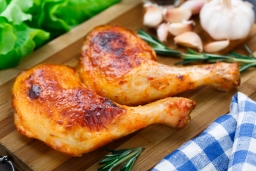Should Athletes try the Paleo Diet?
Wednesday, May 13, 2015 - 09:00

The Paleolithic Diet is hugely popular right now with its proponents touting its benefits through books, websites, personal blogs and health and fitness magazines. Athletes are always striving to gain an edge so it's not surprising that many are turning to this diet in the hopes that they will improve their race performance.
What's the appeal?
Many people are attracted to the diet because on the surface it looks relatively healthy. It advocates for whole, non-processed foods and makes big promises that you will see drastic improvements in your health and well-being. When there's so much conflicting nutrition information appearing around every corner, the thought that just eliminating one or a few 'culprits' will help you perform better sounds pretty good.
What's it all about?
The Paleolithic diet is referred to as the caveman diet, Stone Age diet or hunter–gatherer diet. It consists of foods that were assumed to be available to humans prior to modern agriculture. It's an elimination diet that aims to avoid:
- Cereal grains and legumes (no wheat, rye, barley, oats, brown rice, corn, soy),
- All sugars, and
- Dairy (with the exception of butter).
For the most part the recommendations for what to eat follow general guidelines for healthy eating; it focuses on unprocessed foods such as fruit, vegetables, and nuts with an emphasis on consuming meat, particularly lean game meats as well as poultry, fish and eggs. It also includes a good amount of polyunsaturated fats, fibre, vitamins, minerals, antioxidants and is low in saturated fats and sugars.
Does it improve athletic performance?
Unfortunately, the restrictions within this diet almost seem to be the complete opposite of the basic nutrition recommendations for an athlete. In particular, distance athletes usually carbohydrate-load before a race in order to build up their energy stores and then work on replenishing what was lost by eating more carbohydrates to assist the recovery process. Since elite athletes have such great demands put on their bodies, it would be difficult to stick to the Paleo Diet simply because it cuts out these much needed elements of race preparation and recovery.
Training and racing while adhering to the Paleo Diet is not an impossible task but it may be worth sticking to the tried and true until more research is done to prove its effectiveness. If you do decide to make a drastic change to your diet, please consult your physician or registered dietician before proceeding.
References from the SIRC Collection:
BUJKO J, KOWALSKI Ł. The question of ergogenic potential of the Paleolithic diet. Trends In Sport Sciences. October 2014;21(4):213-219.
Bryngelsson S, Asp N. Popular diets, body weight and health: What is scientifically documented?. Scandinavian Journal Of Nutrition. March 2005;49(1):15-20.
CHOW E. Is the Paleo Diet for Cyclists?. Bicycle Paper. March 2015;44(1):4
FITZGERALD M. Should You Eat Like a Caveman?. Triathlete. December 2010;(320):42-44.
Mansfield B. A Paleolithic Diet Versus Eating for Endurance. Skitrax. February 2014;24(3):45.
Comments
Chris Jones replied on Permalink
I find this article a very simplistic analysis of the Paleolithic diet.
We are all individuals and respond very differenty to different diets and variations of diets.
My advice for athletes is to try to get as much dietary information as possible (get educated).
When trying to vary your present diet it is important to keep a record of what foods and what regimen of eating is the most positive for you as an individual athlete.
There is also abook titled "The Paleo Diet for Athletes" that adresses some of the concerns identified above.
It's all about learning.